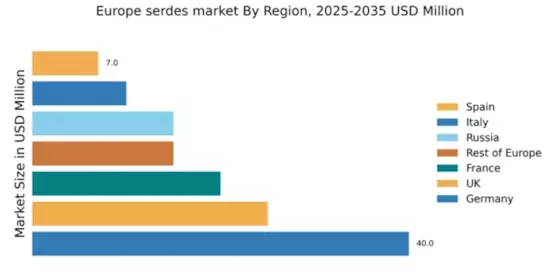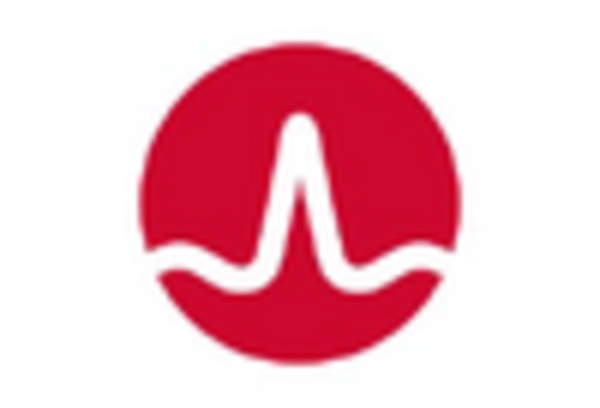Growth in Consumer Electronics
The consumer electronics sector in Europe is witnessing a robust expansion, with an increasing number of devices requiring high-speed data connectivity. The serdes market is benefiting from this trend, as devices such as smartphones, tablets, and smart home appliances increasingly rely on serdes technology for efficient data transmission. The market for consumer electronics is expected to grow by approximately 10% annually, further driving the demand for advanced serdes solutions. This growth is indicative of a broader shift towards interconnected devices, where seamless communication is essential for user experience. As a result, the serdes market is poised for significant growth in the coming years.
Expansion of Automotive Applications
The automotive sector in Europe is increasingly adopting advanced driver-assistance systems (ADAS) and autonomous driving technologies, which rely heavily on high-performance serdes solutions. The serdes market is experiencing a surge in demand as vehicles become more connected and data-driven. It is estimated that the automotive segment will account for over 30% of the total serdes market by 2027. This growth is fueled by the need for real-time data processing and communication between various vehicle systems. As manufacturers strive to enhance safety and efficiency, the integration of serdes technology becomes paramount, thereby propelling the market forward.
Regulatory Support for High-Speed Connectivity
European regulatory frameworks are increasingly supporting the development of high-speed connectivity solutions, which is positively impacting the serdes market. Initiatives aimed at enhancing digital infrastructure and promoting broadband access are likely to drive demand for serdes technology. The European Commission has set ambitious targets for digital transformation, which include improving internet speeds and connectivity across member states. This regulatory environment is expected to foster innovation within the serdes market, encouraging investments in research and development. As a result, companies are likely to focus on creating more efficient and advanced serdes solutions to comply with these regulations and meet market demands.
Rising Demand for High-Speed Data Transmission
The increasing need for high-speed data transmission in various sectors, including telecommunications and data centers, is driving the serdes market in Europe. As businesses and consumers demand faster internet and data services, the adoption of serializer-deserializer (serdes) technology is becoming essential. The market is projected to grow at a CAGR of approximately 15% from 2025 to 2030, reflecting the urgency for enhanced data transfer capabilities. This trend is particularly evident in the deployment of 5G networks, where serdes solutions are critical for achieving the required bandwidth and low latency. Consequently, the serdes market is witnessing significant investments aimed at developing advanced serdes solutions to meet these demands.
Emergence of Artificial Intelligence and Machine Learning
The integration of artificial intelligence (AI) and machine learning (ML) technologies across various industries in Europe is creating new opportunities for the serdes market. These technologies require high-speed data processing capabilities, which serdes solutions can provide. The demand for AI and ML applications is expected to grow significantly, with projections indicating a market size increase of over 20% by 2028. This growth is likely to drive the need for advanced serdes technology, as organizations seek to enhance their data processing capabilities. Consequently, the serdes market is adapting to meet these evolving requirements, positioning itself as a critical enabler of AI and ML advancements.
















Leave a Comment